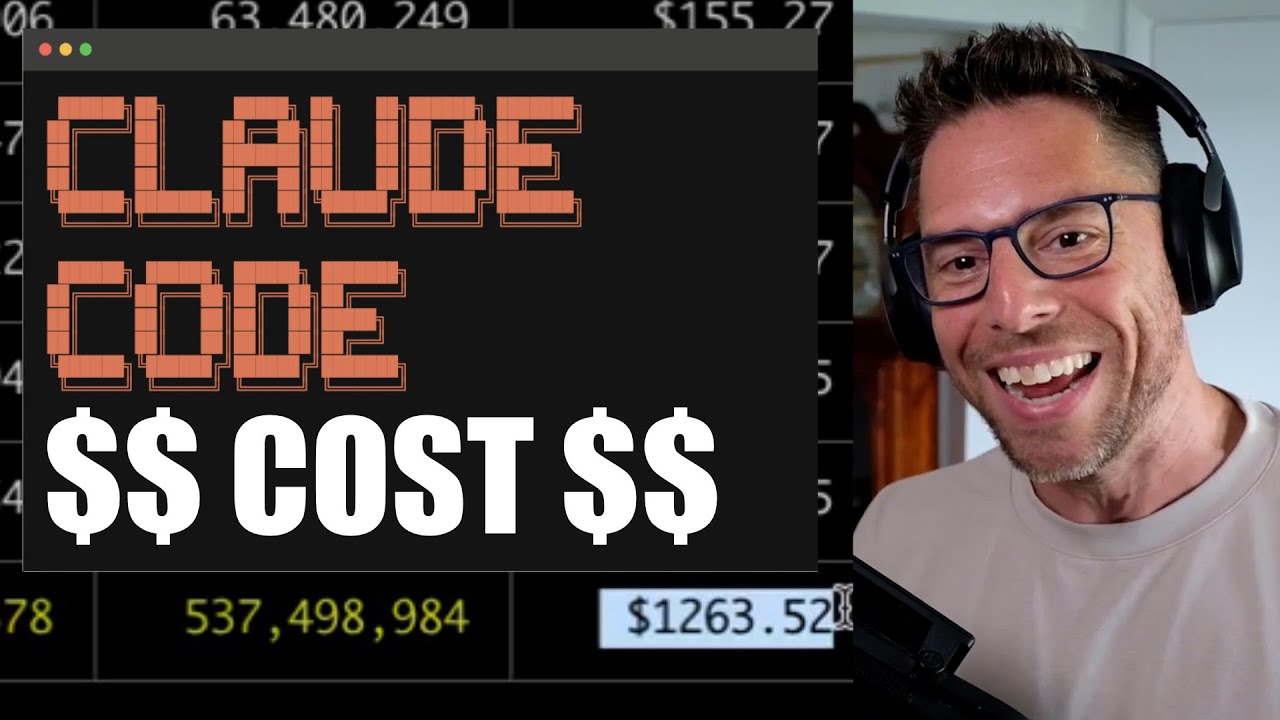The video discusses the CC Usage tool, which tracks and analyzes token consumption and costs for Anthropic’s Claude Code AI assistant, helping users optimize their usage and manage expenses through detailed reports and unique features like token consumption blocks and live views. It also highlights the tool’s rapid development, community-driven enhancements, and its role as both a practical utility and cultural phenomenon among developers navigating the evolving landscape of AI-assisted coding.
The video centers around a discussion of the CC Usage tool, a utility designed to track and analyze the cost and token usage of Anthropic’s Claude Code (CC) AI coding assistant. The host and guest share their experiences with CC Usage, highlighting how it has become a sort of “scorecard” among developer friends to showcase their usage and spending on the platform. The tool provides detailed reports on token consumption, costs, and savings under different subscription plans, helping users understand and optimize their usage of Claude Code. The guest explains that the tool is best run using the bunx command for speed and ease of access to the latest version.
A significant portion of the conversation delves into the cost structure and token usage patterns revealed by CC Usage. The guest shares personal data showing thousands of dollars worth of tokens consumed over weeks, which initially caused anxiety due to the high costs of metered usage. However, with the introduction of Cloud Max plans, users can leverage the platform more freely without constant worry about expenses. The tool also exposes the heavy use of caching tokens in Claude Code, which dramatically reduces costs by reusing previous context, making the AI’s code generation more efficient and powerful compared to other tools like Cursor.
The video also explores some of the lesser-known features of CC Usage, such as monthly and session-based reports, detailed JSON logs, and a unique “blocks” feature that visualizes token consumption within five-hour usage blocks. This block system helps users monitor and manage their spending limits effectively, especially on lower-tier plans. A live view feature is also demonstrated, showing real-time token burn rates and projections, which users find helpful for managing active coding sessions. The guest mentions integrations with tools like Git worktrees and tmux to facilitate parallel usage of Claude Code, enhancing productivity.
The origins and development of CC Usage are discussed, revealing that the initial version was created in just a few hours following the release of Anthropic’s Sonnet 4 and Opus 4 models. The tool quickly gained popularity due to its practical utility and the community’s interest in tracking AI usage costs. The guest also touches on challenges faced, such as changes in model pricing data that required adapting the cost calculation methods. The open-source nature of the project has encouraged contributions, including UI enhancements and integrations like Raycast extensions and leaderboards, fostering a vibrant ecosystem around CC Usage.
Finally, the conversation reflects on the broader implications of CC Usage as both a practical tool and a cultural phenomenon within the developer community. It serves as a badge of honor and a motivator for efficient AI usage, while also sparking discussions about cost, environmental impact, and the evolving nature of software development with AI assistance. The host expresses gratitude for the tool’s role in improving their workflow and accountability, and the guest shares enthusiasm about the project’s impact and community engagement. With tens of thousands of installs and growing interest, CC Usage exemplifies the exciting and rapidly changing landscape of AI-powered coding tools.
